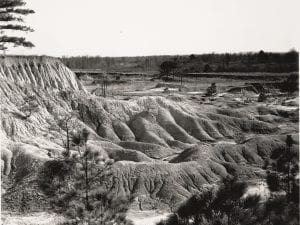Saatchi’s Gaiety is the Most Outstanding Feature of the Soviet Union is a broad anthology of Russia’s contemporary cultural offerings. Lightness, whatever the title may suggest, is an element scarcely present within Saatchi’s latest exhibition – instead chiefly memorable for its dark images of poverty and depression – until, that is, you reach the gallery’s top floor where spotlights bounce off slick oil paintings which hang proudly, just waiting to be appreciated.
Visiting again, I would follow this exhibition in reverse as by the time I made it up to Gallery 11’s Breaking the Ice: Moscow Art 1960s-80s, my blood sugar was a little depleted. Still, the uppermost galleries are manageable and truly enjoyable: two hundred paintings made in Moscow over a twenty-year period glow with hope, joy and defiance – luminous colours painted with such strength that you can almost see the artist’s arm forcing a spindly brush through clogging oils. These paintings are sincerely beautiful and evocative; characteristics that don’t necessarily apply to the majority of this gargantuan show.
For the most part, the show is a combination of contemporary work which barely discusses the Soviet era, and work from the nineties which is entirely consumed by it. The odd image of a state in chaos is attempted by current artists such as Gosha Ostretsov, whose papier mache figures of mutilated officials could be gruesome if it were not for their weak materiality which, coupled with the use of superhero masks and neon paint, results in work which seems more parody than political.
The major redeemers of Saatchi’s pick of emerging Russian artists are sculptor Daniel Bragin, and painters Janis Avotins and Dasha Shishkin. Bragin’s Bedtime Story is unnerving: a child’s comfort blanket tossed on the floor, stitched from thousands of shards of glass which glint pastel turquoise and pinks. With its clever subtlety it is a pleasing surprise after the booming horror of works like Boris Mikhailov’s enormous photojournalism series – Bragin’s work is a sharp-tongued whisper, unlike Mikhailov’s theatrical wail.
The painters of the show are opposites: Avotins using loose blacks and ochres on traditional canvas, whilst Shishkin works like an excited child with a wax crayon – scrawling brilliant acrylic hues onto plastic Mylar. Of the several contemporary painters featured, Avotins certainly comes closest to his top-floor predecessors on the emotive impact scale. His washes of blue-black are nostalgic and cold: tiny figures wander through an infinite dark wilderness – how insignificant one can feel, perhaps, to live in a country of one hundred million.
Shishkin’s paintings meanwhile, are conversely joyous and look almost like images of French café culture: in her all-female scenes, nude high-society women dance gaily – their noses and nipples bizarrely extended and impaling one another, smiling as they chew on a dismembered arm or looking down, surprised by the mushrooms protruding from their chests: violent chaos intelligently portrayed through a sugar-sweet palette.
Much of the work can appear conceptually confused, but this is to be expected from a country which is only really now emerging from years of turmoil and catching up with Western culture in an eclectic fashion. The show’s diverse themes and overall un-Soviet feeling only become slightly problematic in light of Saatchi’s potentially misleading title, however one contemporary artist who does sit comfortably under its heading is Sergei Vasiliev; whose harrowing and utterly beautiful photographs feature an immeasurable assortment of communist iconographies.
These photographs were taken in the late eighties and early nineties but, printed recently, are dated 2010 in a hope to update them. Though this is not detrimental to the work as the subjects are male prisoners and therefore likely to have remained where they were twenty years ago, still coated in amateur tattoos – melted boot heels, urine and blood scratched into their pallid skin. Arms, legs, chests, ears and eyelids are marked with religious imagery, pin up girls, objects of wealth and an array of texts and emblems both personal and political. The most haunting aspect is the men’s gentle demeanour: we see them tentatively touch one another’s knees, hang their heads hopelessly and clutch their own bodies tight. Through Vasiliev’s photography these men have become victims rather than criminals, soft, and in spite of their scarred faces and rotund bellies are somehow handsome. Vasiliev’s series may physically stand on the same scale as the bleak portraits of Boris Mikhailov, but are dissimilarly delicate, quiet and incredibly sensitive.
Other works in this show include the colossal mixed-media pieces of Valery Koshlyakov which were summed up by a fellow viewer as “just…quite pretty”; further papier mache from Daria Krotova, and two scaffold towers from Nika Neelova which would be melancholy if not so brightly lit.
Gaiety promises to alarm, confuse and exhaust; but most of all, to provoke discussion and leave a deep and lasting impression. The title is deceptive, however the work remains enlightening. The exhibition runs until May, and it is one of the few exhibitions I aim to visit again; this time stopping at Gallery 1 for Vasiliev’s hapless convicts, before spending some time with Saatchi’s contemporary painters, swiftly eschewing Boris Mikhailov’s melodramatic photographs and skipping ahead to the beauties of the top floor.
Review of Gaiety is the Most Outstanding Feature of the Soviet Union, until 5 May, Saatchi Gallery, Duke Of York’s HQ, King’s Road, London, SW3 4RY.
Chloe Hodge
Credits
1. Vikenti Nilin, From the Neighbours Series, 1993-present, Giclée print, 165 x 110 cm, © Vikenti Nilin, 1993, Image courtesy of the Saatchi Gallery, London.
2. Boris Mikhailov, Case History, 1997-1998, A set of 413 photographs, Dimensions variable, A selection illustrated © Boris Mikhailov, 1998, Image courtesy of the Saatchi Gallery, London.
3. Sergei Vasiliev, Russian Criminal Tattoo Encyclopaedia Print No.12, 2010, Giclée print 165 x 112 cm © Sergei Vasiliev, 2010, Image courtesy of the Saatchi Gallery, London.





